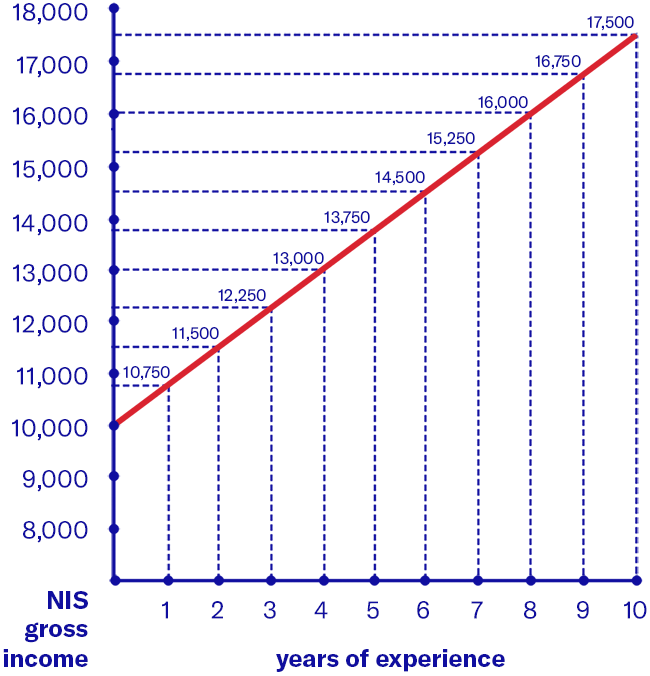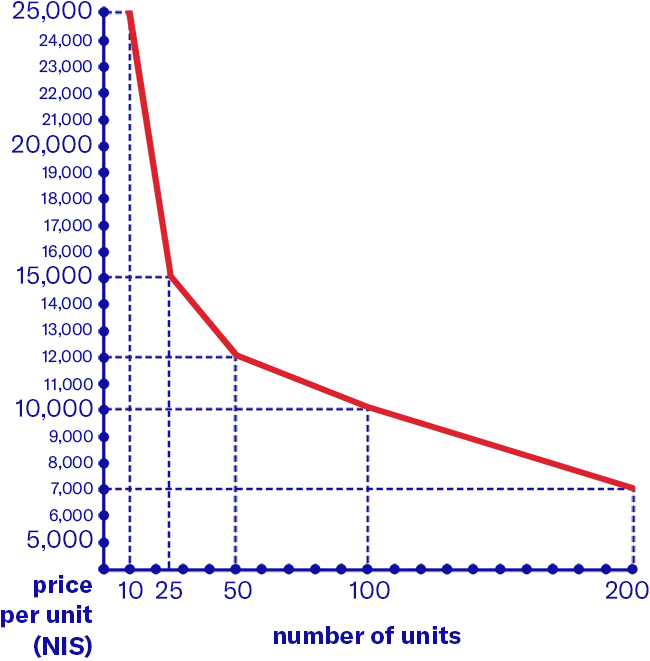How Much Do Architects Make?
(updated 2024)
There are several possible career paths for architects in the market. Whether in large or small architectural firms, as employees, or as self-employed with an own office. Additionally, architects can work in the public sector for local or national authorities and committees, in academia, or in the media.
This does not include architects who have chosen parallel fields such as project management, architects employed in developer companies, or those who have moved to product design or graphics.
This list refers to the average salary in the Israeli market for architects in various tracks.
Employees
Architects employed in offices typically start after completing their bachelor’s degree (a 5-year program) with an average gross salary of around 10,000 NIS. This salary typically increases by around 750 NIS per year. Senior architects and team managers can earn between 18,000 – 20,000 NIS. Additionally, in certain offices, senior architects may be promoted to office manager or partner positions, which come with higher salaries.
The salary of architects-employees is lower than the average salary in other fields (about NIS 12,000). In particular, it’s low compared to the salary of professionals with higher education (such as lawyers, accountants, engineers, etc.).

Based on salary surveys from 2024 on websites: AllJobs, Ynet, ArchiJob. Gross – total income before deductions such as taxes, pension payments, and transportation allowances.
Self-employed
There are several methods for calculating the architect’s fee:
Percentage of the project: In dense planning of residential, office, and commercial buildings, the architect’s fee in Israel ranges from 2% to 3% of the project building cost. In public buildings design, the percentage is higher and amounts to 3% to 5% of the project cost.
The cost of the project is calculated according to the construction cost per square meter. There is a wide range of costs according to the standards:
A very simple standard contractor build will cost around NIS 5,000 to 6,000 per square meter, while a high and prestigious build will cost twice as much. The cost of building a basement for parking is around NIS 3,000 per square meter, as well as building balconies.
For example – A building with an area of 5,000 square meters is being constructed at a cost of NIS 5,000 per square meter. The total project cost is NIS 25 million. The architect’s fee, set at 2%, comes to NIS 500 thousand.
Private housing sector of villas and the like, the fee is about 5% to 8% of the project cost.
For example, a private house of 200 square meters, with a standard construction contract of NIS 6,000 per square meter. The construction cost is NIS 1.2 million, and the architect’s fee, set at 5%, comes to NIS 60 thousand.
The private housing sector is particularly dynamic and competitive, especially among engineers and architects. Prices for a standard architectural project of a private house can range from as low as NIS 30,000 to several hundred thousand shekels for luxury designs.
The interior designer typically receives 6% of the interior cost, which amounts to half of the project architect’s budget. In small apartment projects, the interior designer’s fee is approximately 10% of the renovation cost. As for construction, the cost for a standard interior contractor averages around NIS 3,000 per square meter, while for high standards, it can reach around NIS 8,000 per square meter.
For example, for a simple renovation by a contractor of a four-room apartment of 100 square meters at a cost of NIS 3,000 per square meter,The cost of renovation is NIS 300,000 and the architect’s 10% fee is NIS 30,000.
This field is also very competitive, with interior designers and decorators.
Unit Price: Another method for calculating costs is based on the price per unit.
In the residential sector, the fee is priced per apartment unit. The unit price varies depending on the project size, its return rate, its location in the country, and the architect’s experience. The unit price is high for small projects, decreasing as the project grows larger, down to a minimum of 6,000 NIS per unit.
For example, in a standard residential building, 10 floors, 36 apartments, the unit fee is about NIS 14,000, so a total fee is NIS 504,000.

In construction for offices and commerce, it is customary to price NIS 90 per square meter, parking at 30 NIS per square meter. For hotels, the fee is higher NIS 120-130 per square meter.
Sometimes architects charge per hour, especially at the beginning of a project or for consulting hours. The standard rate is typically 250-300 NIS per hour, while a lead architect may charge up to 500 NIS per hour for office projects. For freelance architects, the price ranges from 80-150 NIS per hour of work.
TABA
The preparation of The City Building Plan – zoning plan (in Israel called TABA) is usually priced for the client at a fixed total in NIS, calculated by the architect according to various price lists (Ministry of Housing and Construction, Israel Land Authority, etc.), based on the scope and complexity of the project and the authority it has to pass – whether it’s under a local or regional committee.
For The City Building Plan covering multiple plots, buildings, or neighborhoods, a general rule of thumb is about NIS 2 per square meter of land area plus NIS 4 per square meter built.
For example, land with an area of 10,000 square meters times 2 equals 20 thousand NIS + 60 thousand square meters built times 4 equals 240 thousand NIS. Total fee 260 thousand NIS.
This calculation is not suitable for a building or a single tower on a relatively small plot of land. There, it is a minimum for a regional authority plan – 300 thousand NIS, and for a local authority plan 200 thousand NIS.
More about rates HERE(heb)
20% More!
In order to bring architects salaries in line with the average in the economy and adapt them to the 21st century, both from the perspective of office owners and the architects they hire, a 20% increase is required for all the architect’s salaries mentioned above. This can be achieved through accessible and transparent information on pricing within the architectural community. And good luck to us.
